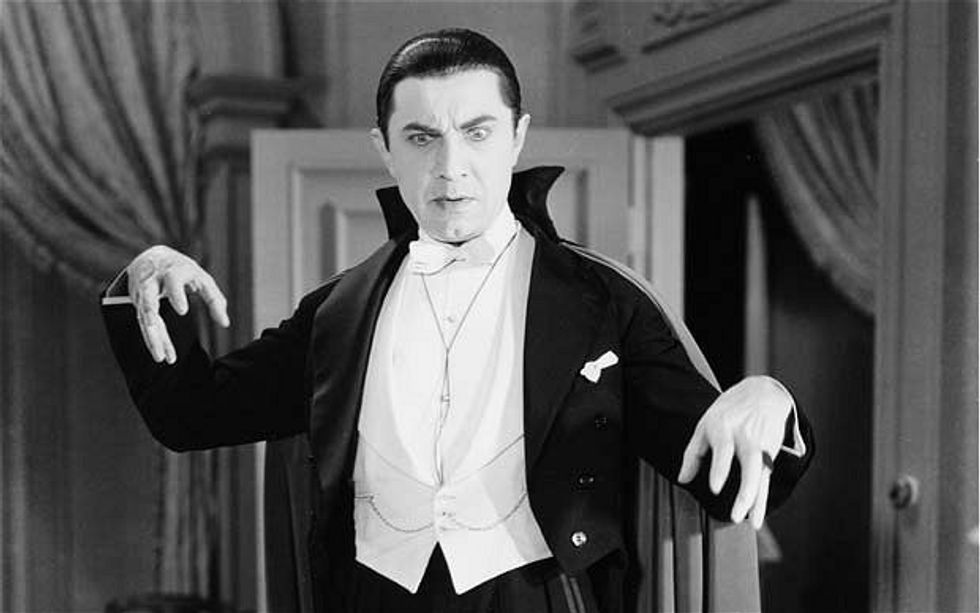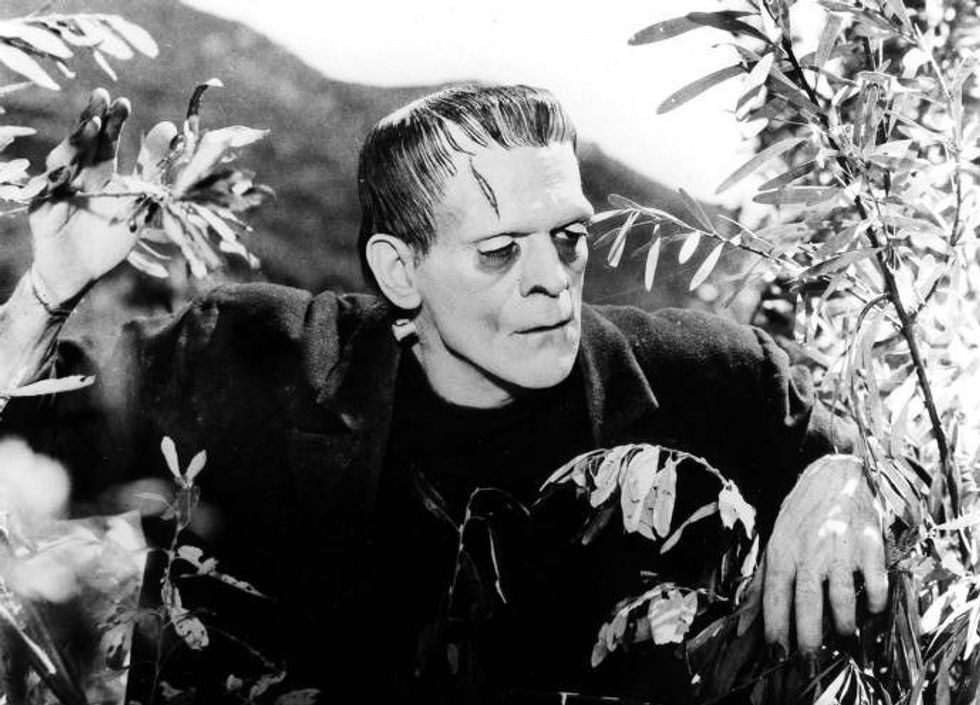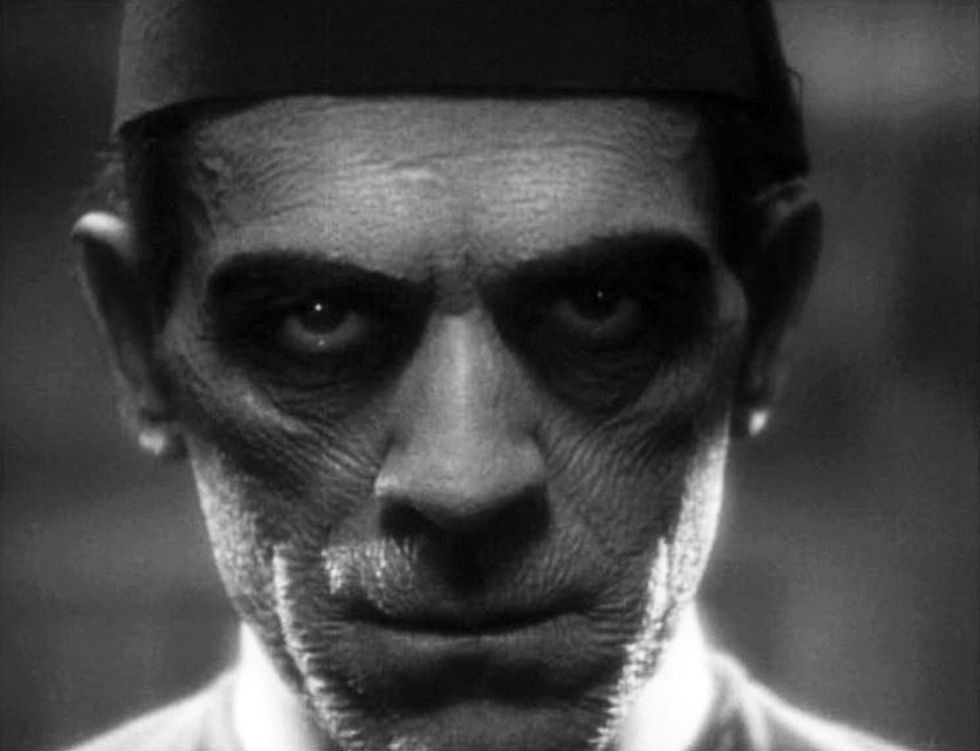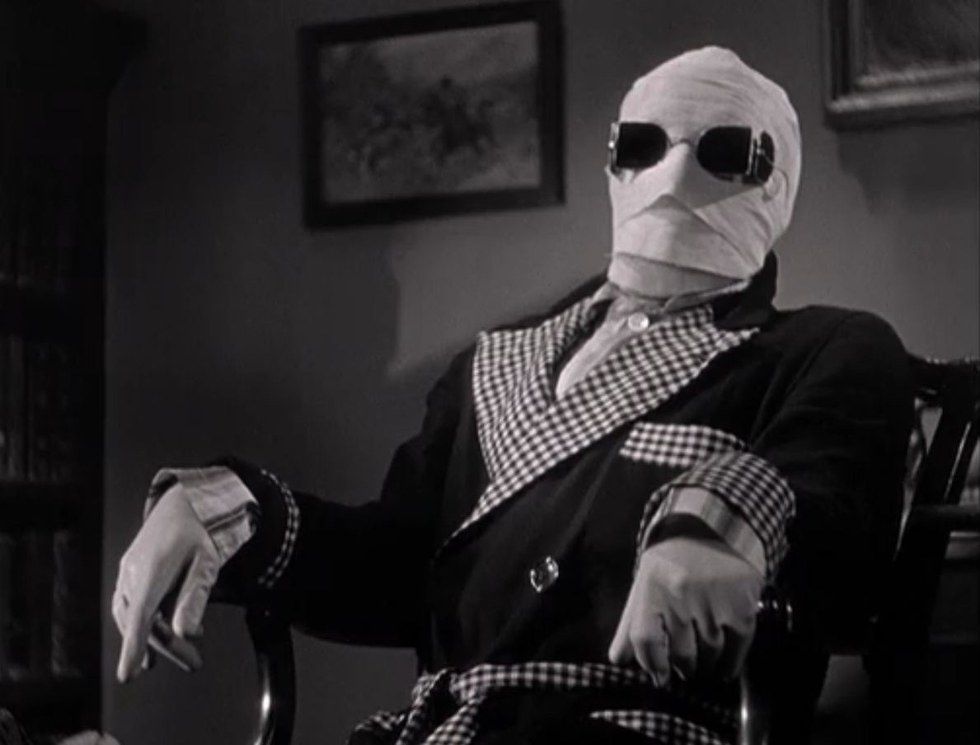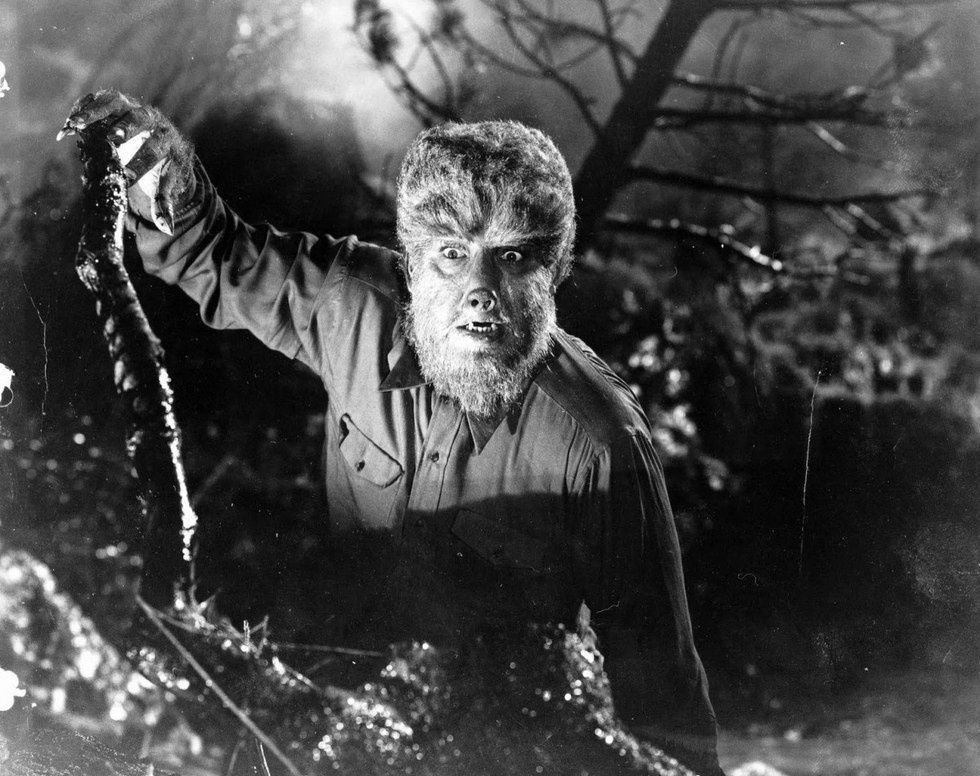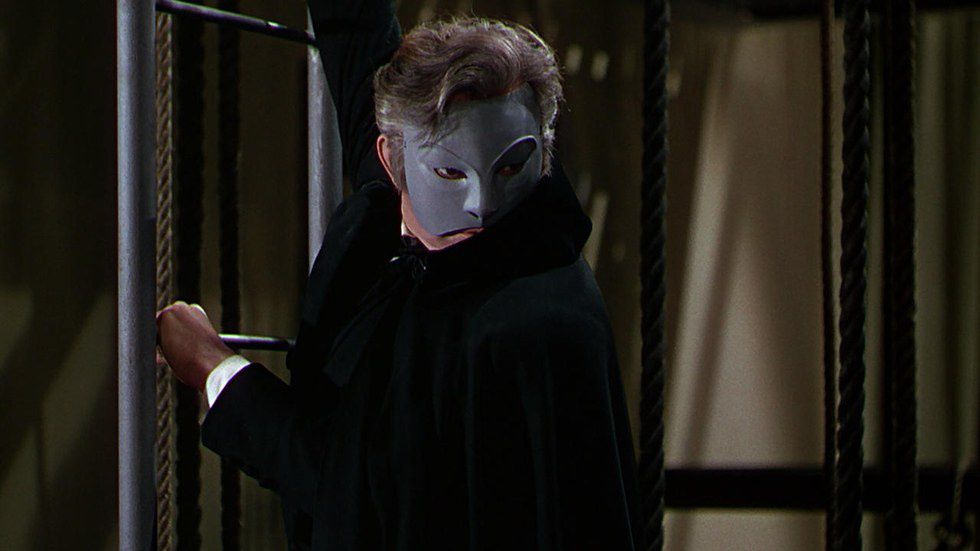You see them every year on TV and in the fall decorations. They seem somewhat corny, yet a traditional staple. They are the monsters that have become Halloween cliché. They have been a part of our culture for so long, and been taken for granted, that most people (particularly the younger generations) have forgotten just how wonderful these monsters are to have become so iconic in the first place. It is my hope to remedy that now. Understand that these movies are over 80 years old at this point, and their age does show a bit, but at the dawn of sound film these movies were giants. Let's now take a look back at that classic line of Universal's movie monsters!
Carl Laemmle, Jr., son of Universal Studios' founder and also head of production, was very enthusiastic about releasing horror movies as “talkies” started to come into their own. Universal had already had some fair success with silent horror films such as “The Hunchback of Notre Dame” and the original “Phantom of the Opera” in 1925 (both starring Lon Chaney, Sr.), but Laemmle, Jr. wanted to bring new thrills starting with a famous novel written by Bram Stoker.
Dracula (1931)
“Dracula” starts with a solicitor named Renfield entering Transylvania. After many people try to warn him of the danger, he proceeds to Castle Dracula on business. He arrives and meets Count Dracula, a charming and mysterious man who, unbeknownst to Renfield, is a vampire. Renfield has brought Count Dracula the deed to Carfax Abbey in London. After receiving the deed, Dracula makes Renfield his slave and travels with him to England where his bloodlust can be satisfied.
Although not initially considered for the film role, Bela Lugosi gives a sinister and chilling performance as the titular character. Having already performed the role on stage to rave reviews, Lugosi brought his commanding presence to the screen creating such a cinematic icon that even today everyone knows who Dracula is. It is Lugosi who is most often associated with the character. Even though there was a lack of special effects capabilities in that day (this was in the midst of the Great Depression, after all), director Tod Browning gives the film the style and ambiance it needs to grip the audience and send chills of fear down your spine.
Personally, my very favorite part of the film is the character of Renfield played by Dwight Frye (who would go on to do roles in other monster movies). He starts out as this unassuming, carefree guy. He honestly seems like the kind of guy you'd like to be friends with. Very friendly and warm. Then, when Dracula turns him into his own dark slave, it's insane how creepy he becomes. He starts to hunger for lives as Dracula does, though little ones like insects. The creepiest shot in the entire movie to me is when the British authorities discover Renfield in the hold of the ship. The camera looks down the stairs at Renfield who casts a malicious, wide grin that shows that any sanity this man ever had is long gone.
Following the success of “Dracula,” Laemmle, Jr. immediately pushed to make more horror films at Universal. The next one they made was adapted from a stage play loosely based on a novel by Mary W. Shelley.
Frankenstein (1931)
The film opens in a dark graveyard where a funeral is ending. As the priest gives the final rites, Dr. Henry Frankenstein (not Victor as in the book) and his hunchbacked henchman Fritz (Ygor would come in the film “Son of Frankenstein”) wait to steal the fresh corpse. Frankenstein is working on an experiment to bring life to a body made from dead human parts. His fiance, friend and former mentor attempt to reach out to him at his lab inside an old, isolated watchtower. They arrive in the middle of the experiment, however, and watch in horror and amazement as Frankenstein's creation comes to life. But as his creation begins to learn, Frankenstein becomes more and more convinced that he made a monster.
The story of Frankenstein, whether it's the novel or the film, is a classic story in which the audience must ask, “which is the man, and which is the monster?” James Whale directs this take on the timeless story, and though it is quite different, this is often the version people remember most. One thing you have to understand is that even though today's younger audiences may consider this film to be old and hokey, it was a huge deal in its day. By huge I mean that it was on the same scale as “Star Wars,” “Jaws” or Marvel's “The Avengers.” It had a pretty big impact on the culture. When someone is shown a picture of Boris Karloff in the monster makeup, they know immediately who it is even if they haven't ever seen the movie. That image has become a worldwide icon. The movie, for its time, was also quite frightening. This was depression-era America, remember. It was so bold and different that the producers decided to put a little “warning” of sorts at the beginning of the film. Actor Edward Van Sloan appears before the opening credits to deliver this message:
How do you do? Mr. Carl Laemmle feels it would be a little unkind to present this picture without just a friendly word of warning: We are about to unfold the story of Frankenstein, a man of science who sought to create a man after his own image without reckoning upon God. It is one of the strangest tales ever told. It deals with the two great mysteries of creation; life and death. I think it will thrill you. It may shock you. It might even horrify you. So, if any of you feel that you do not care to subject your nerves to such a strain, now's your chance to uh, well, ––we warned you!!
There is so much to enjoy about this film. First of all, there's Karloff's performance as the monster. This, in my opinion, is one of the best performances in the history of cinema. The monster is rough-looking and instills fear and unease into those around him. Yet his true nature is one of childlike innocence. There is a scene in which the monster enters the lab, and Dr. Frankenstein tries to work with and educate him. When he shows the monster sunlight for the first time, the monster reaches for it as though entranced by its beauty. He then becomes sullen when the light is gone. Another remarkable scene is when the monster discovers a little girl throwing flowers into the water to see them float. The monster's interaction with little Maria is heart-warming, and when he accidentally kills her you see him overcome with grief and sorrow. To think it only gets better in the sequel.
Colin Clive played the obsessed scientist well in the role of Henry Frankenstein. Edward Van Sloan returns to another monster movie. Where he played Van Helsing in “Dracula,” he here play's Frankenstein's mentor Dr. Waldman. Waldman is the voice of reason in the story, I'd say. Mae Clarke plays Henry's fiance Elizabeth. Dwight Frye is particularly good as the hunchbacked henchman Fritz. Frye, after playing the crazed Renfield in “Dracula” plays the eager helper to Dr. Frankenstein who meets an untimely end after pestering the monster.
The movie boasts special effects and make-up that were revolutionary for its day. Watching all of the electrical apparatus in the lab while the big experiment goes underway is just mesmerizing. It was so well-done and so liked, in fact, that it became a staple in all future Frankenstein movies. Jack Pearce was the legendary make-up artist who came up with the design for the monster. Boris Karloff spent three and a half hours getting the make-up on. Taking it off was a very painful process. As I said before, the monster's look has become iconic. It was a real thrill for audiences in that day.
Frankenstein, though quite old now, is still one of the best films ever made. If it is given a fair chance, it can still have the same effect on an audience today as it did back then. Not long ago I asked my wife if she had ever seen the movie. When she told me she hadn't, I was delighted to show it to her. One thing I love about my wife is that she gives all movies a chance no matter how old they are. I kid you not, the movie was quite scary to her. She even had a nightmare about it that night. That just goes to show the power of this movie.
Bride of Frankenstein (1935)
The story for “Bride of Frankenstein” picks up precisely where its predecessor left off, even if it did take four years to film it. The monster, having survived the windmill fire from the original's climax, leaves and starts roaming the forest after the mob leaves. Meanwhile, a distraught and sick Dr. Henry Frankenstein is visited by a dark, mysterious man called Dr. Pretorious. Pretorius, himself an experimenter with giving life, wants Frankenstein's help to create a mate for the monster. Frankenstein is hesitant at first, intent on destroying his original creation, but the monster takes Frankenstein's new wife hostage until he agrees to comply.
My brief synopsis doesn't do it much justice, but this film goes into the rare category of being a sequel better than the original. This is pretty ironic when you learn that director James Whale initially was hesitant to make a sequel. There is so much to love about this film! Whale took more creative control with this film, and added a few more instances of humor than we had before. There is also a prologue to the film which depicts author Mary W. Shelley, her husband and Lord Byron talking about how she came up her original story of Frankenstein, which segues into the film. This was Whale's idea, and it gives the film a nice bookend sequence. Incidentally, Mary Shelley is played by actress Elsa Lanchester who plays the bride in the film's climax.
Introduced in this film is the evil Dr. Pretorious, who is the opposite type of character from the first film's Dr. Waldeman who tried to keep Frankenstein morally grounded. Pretorius is played by the exceptional Ernest Thesiger (who was James Whales theatrical mentor). Pretorius was originally going to be played by Claude Rains (which would have been pretty cool, I think), but Ernest Thesiger plays the character with such devilish relish.
Karloff wows with his performance as the monster. If he had any kind of sympathy in the first film, that was nothing compared to this. As the monster begins to learn speech we learn that he just wants to be loved. Don't we all? Isn't that the most basic human want? After being chased away by a mob, the monster finds a secluded cottage in the woods where an old, blind hermit lives. The two become good friends and the sequence with these two is one of the most beautiful things ever put on film.
Ironically, the character the film is named after is only seen for about five minutes at the end of the film. It certainly says a lot, however, that the Bride has become the most iconic female monster of all time having only a few minutes of screen time. Elsa Lanchester modeled the Bride's hissing noises from swans she would watch. The make-up was again done by Jack Pearce, though he and Lanchester didn't get along. She thought his ego was way too huge.
I would go so far as to say that “Bride of Frankenstein” is not just one of the best monster movies, but one of the best movies in general. Even if monster/horror movies aren't your forte, you should really check this one out.
The Mummy (1932)
In 1921, Sir Joseph Whemple leads an archaeological dig in Egypt. They uncover the mummy of ancient priest Imhotep along with the Scroll of Thoth, which contains passages thought by some able to resurrect the dead. Whemple's assistant reads part of the scroll bringing Imhotep back to life. Imhotep takes the scroll and is gone. Ten years later, Imhotep masquerades as a common Egyptian called Ardath Bey. His goal is to find the tomb of his former love Ankh-es-en-amon. He finds another archaeological dig, headed by Whemple's son, and tells them where to dig for the tomb. After the contents of the tomb are taken to the Cairo Museum, Imhotep finds a woman descended from Ankh-es-en-amon, and intends to get back his former lover.
“The Mummy” can be described as “love transcending time.” Okay, it's a really weird love story. This was a very popular movie that scared the socks off of a lot of people. In its day, there were a lot of superstitious people that believed in the curses that were said to come with digging up a mummy's tomb. A lot of these superstitious beliefs were heightened by the opening of Tutankhamun's tomb in 1922.
Make-up artist Jack Pearce studied ancient Egyptian embalming techniques to get the most realistic look possible for the film's villain. The Mummy has two different looks in the film. When we first see him, he is wrapped in the bandages and has a very...well, mummified look to him. This make-up took eight hours to apply. The other look was for Ardath Bey. This application took less than half the time, but the look of the skin is very creepy.
Boris Karloff again kills this performance. Very different from Frankenstein's monster, Imhotep is the villain who will go to any lengths necessary to fulfill his task and reclaim his love. It's almost romantic in a way. Zita Johann who plays Helen, Ankh-es-en-amon's descendant, is also superb in her role. It is said that she was actually a believer in reincarnation and the occult, so I imagine this role was quite a walk in the park for her.
Though perhaps not quite as iconic as Dracula or Frankenstein's monster, the Mummy is one of the most enduring characters and films in the Universal catalog.
The Invisible Man (1933)
Dr. Jack Griffin learns the secret to making himself invisible through a drug called monocane. The only problem is, monocane has the side effect of driving the user insane. Griffin's fiance and employer realize this and try to save him from himself, but he has already started terrorizing people.
“The Invisible Man” was a fantastic achievement for Universal. The special effects for that day were second to none, leaving audiences in awe as they watched a man turn invisible before their very eyes. Claude Rains is particularly good in this his second film appearance, though it is funny that the role that would launch his acting career wouldn't even show his face except for about 15 seconds at the very end. Rains really got into the role. As I sit here writing this I can still hear his maniacal laughter ringing in my ears. This film made audiences realize that horror doesn't just come through ghosts and monsters, but can also come from real, hard science.
The Wolf Man (1941)
“The Wolf Man” was not Universal's first attempt at a werewolf film. “Werewolf of London” was made in 1935, but did not do very well. They tried again, this time with the son of famous actor and “Man of 100 Faces” Lon Chaney. Lon Chaney, Jr. plays the lead role of Larry Talbot.
After his brother's death, Larry Talbot returns to his boyhood home in Wales to reconcile with his estranged father (Claude Rains). While in town, Larry falls for a girl named Gwen who runs the local antique shop. For an excuse to talk to her, he buys a cane with a silver wolf head top. Gwen tells him it represents a werewolf. Throughout the film, we hear the recitation:
Even a man who is pure in heart, and says his prayers by night;
May become a wolf when the wolfbane blooms and the autumn moon is bright.
That night, Larry saves Gwen's friend from an animal attack by beating the animal to death with his cane. But Larry is bitten in the struggle. It is revealed to him that the animal was a werewolf, and soon Larry begins to change into a wolf-like creature and stalks the night.
The Wolf Man is one of the three main iconic movie monsters. The movie was so popular that Chaney reprised the role in four more films. Jack Pearce once again came up with the monster make-up, adding varying amounts of hair at a time for the transformation scenes. Bela Lugosi appears as the gypsy Bela, the original wolf that bites Talbot.
I think one of the reasons “The Wolf Man” has held such a legacy is not just the lycanthropy storyline, but also because often a man's worst enemy is himself. When Larry Talbot becomes the Wolf Man, he battles against his baser instincts.
Phantom of the Opera (1943)
Last, but not least, is a film that often gets overlooked. While perhaps not technically a monster, 1943's “Phantom of the Opera” is almost always included in the list of Universal's monster movies. It is an excellent film, even if it isn't necessarily like the others.
Erique Claudin has been a violinist with the Paris Opera for 20 years. He particularly enjoys getting to hear the voice of up-and-coming soprano Christine Dubois, so much so that Claudin has secretly been paying for her private lessons believing her to be the next big talent in Paris. After losing the use of his left hand, though, Claudin is dismissed from the Opera. In an attempt to make some money, Claudin tries to sell a concerto he has written to a local music publisher. He mistakenly believes them to have stolen his work, however, and Claudin winds up killing one of the men and getting burned with acid in the process. Now disfigured and a fugitive, Claudin equips himself with a mask and cape to become the Phantom of the Opera. His goal is to get rid of anyone and anything standing in the way of Christine's rise to stardom.
It isn't quite the “Phantom” that Lon Chaney, Sr. made famous in the silent era, nor is it the romantic musical people around the world have fallen in love with, but this version is a great film in its own right. Claude Rains plays the obsessed Claudin to chilling perfection. The story is well-written and keeps the suspense going (while also adding a fair bit of humor). The only downside people seem to mention with this film is that there is a lot of opera singing. I mean a lot. Personally, I like it, but I know it rubs a lot of people the wrong way.




